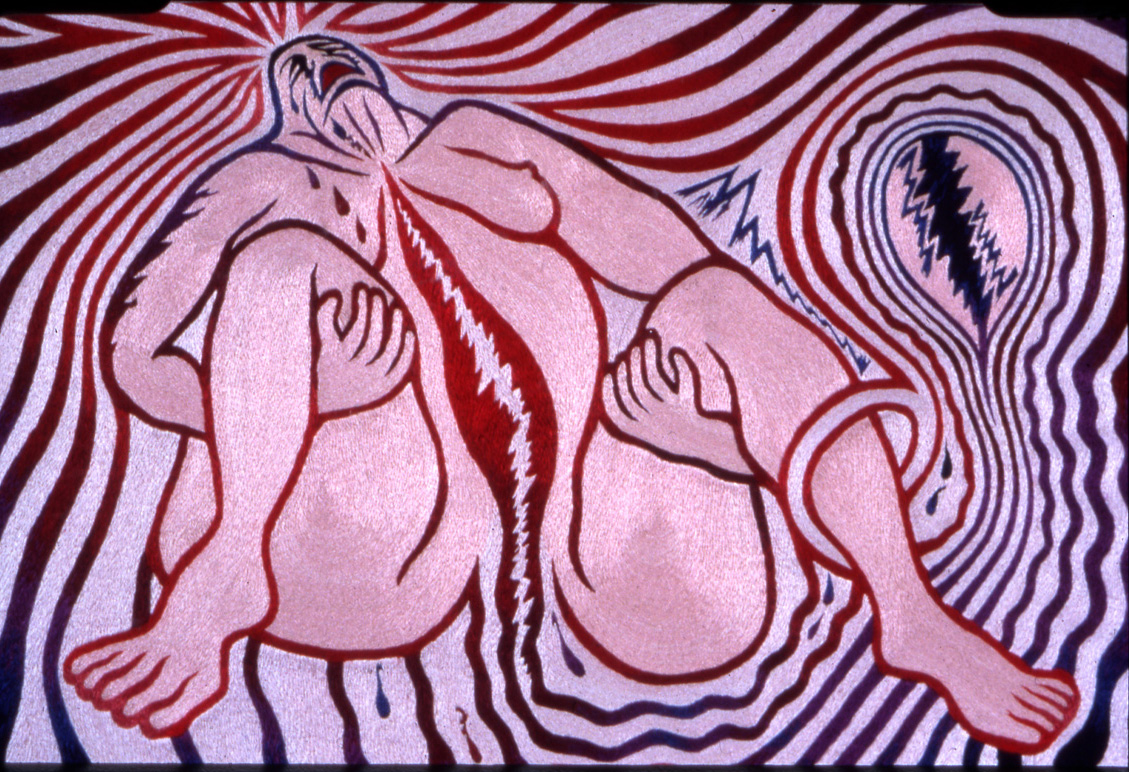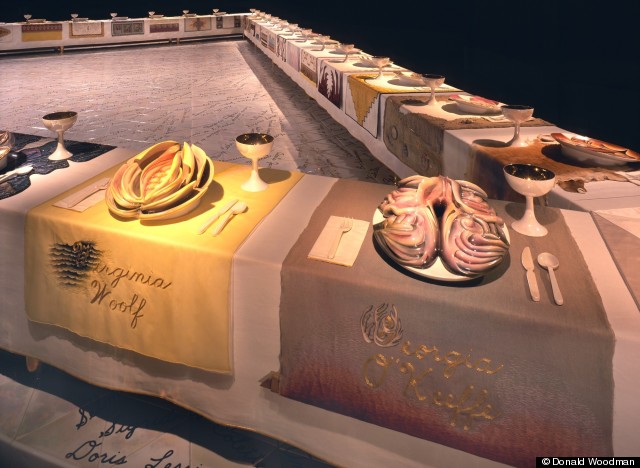“The personal is political…You can’t separate your
activism from your art any more than you can separate your sexuality from your
identity.”
-Catherine Saalfield
Considering the subordinate
position bestowed upon women in American society as a whole, it is no surprise that
they too would take second string when it comes to the art and media industry. As
women continue to make strides, contributing to these industries by challenging
normative narratives, posing provocative questions and stretching perspectives;
their stories, voice and realities continue to be marginalized and devalued. This
issue is further complicated when taking women of color and their contributions
into account. If women as a whole have found the glass ceiling impeding their
success, then women of color are often left facing (or appears to be if nothing
else) a concrete ceiling, one that has the ability to be penetrated but with a
much greater force and effort than that of glass.
When assessing the plight of
women in the arts and media, having a force –the energy, effort, support and resources–is
necessary to penetrate any ceiling in order to improve the social position of
all women. The force of which I speak can be found in the depth of alternative
media sources which are often designed to bring theory to practice, art to
activism and life to the living. Alternative media sources are those niche
spaces in time devoted to the underrepresented and their development as socialized
beings. In these spaces of creativity, the voices of the peripheral are celebrated
and championed, even at hand of exploitation. Nonetheless, these voices are
given a lane in the light during times when darkness seemingly prevails.
Donna Zimmerman, the
executive director of Women Make Movies (www.wmm.com),
the world’s largest nonprofit distribution of films and videos made exclusively
by women is an example of the force in which I speak; the one that works
tirelessly to support women and serve as a resource for their artistic
advancement. (Redding & Brownworth, p. 261)Women Make Movies was founded in
1972 and in 2013 it continues to serves as an essential, as well as critical,
advocate for diverse female representation. Women Make Movies was “established
to address the under representation and misrepresentation of women in the media
industry. It is a multicultural, multiracial, non-profit media arts
organization which facilitates the production, promotion, distribution and
exhibition of independent films and videotapes by and about women. The
organization provides services to both users and makers of film and video
programs, with a special emphasis on supporting work by women of color” (Women
Make Movies, 2013).
As Donna Zimmerman stands at
the forefront of production, promotion and distribution, Maggie Hmm and bell
hooks brings us literary and feminist theory and critique to the center, as
they push the envelope and forces to society at large to question and revisit
historical and contemporary binaries that limit and restrict the female
experience. Hmm reminds us in her essay, “Author/Auteur: Feminist Literary
Theory and Feminist Film” of the works of Josephine Donovan and her “call for a
feminist aesthetic which directly addresses the experiences of women” (p. 95). Humm highlights Donovan term “gynocriticism”,
which is “a way of assessing works of art specifically in relation to the
interest and desire of women” (p. 95).
“Gynocriticism
involves a separate female way of thinking, and a recognition that women’s
experience has been effectively silenced by a masculine culture. This response
to that silencing, is a new epistemology which creates or uncovers a ‘newly
visible world of female culture’ opening up and sharing this world with women readers/viewers”
(p. 95).
 bell hooks, too offers analysis of literary
and feminist theory, as well as critiquing both mainstream and alternative forms of
media, particularly film. She takes a stand that not only keeps the
representation of women are the center of discourse but she accentuates the
complexity of women of color and their realities as they can become lost even
in women’s advocacy movements. In her
book, Reel to Real, she says that
bell hooks, too offers analysis of literary
and feminist theory, as well as critiquing both mainstream and alternative forms of
media, particularly film. She takes a stand that not only keeps the
representation of women are the center of discourse but she accentuates the
complexity of women of color and their realities as they can become lost even
in women’s advocacy movements. In her
book, Reel to Real, she says that
“Movies
make magic. They change things. They take the real and make it into something
else right before our very eyes…They give the reimagined, reinvented version of
the real. It may look like something familiar, but in actuality it is a
different universe from the world of the real”
(p.
1).
So as we imagine a “reimagined, reversion
of the real” where does this version place women, especially those most vulnerable
in a struggle for recognition? It is here where alternative media takes center
stage and becomes the norm for those who have found it difficult to fit and/or embrace
the status quo. Live Unchained is an alternative media source that gives voice
to Black women and their fight for diverse representation that speaks to their multi-faceted
lives.
Lived
Unchained is a producer, distributor, and promoter of media, representing women
of African descent by focusing on the ability to “connect” and “create” through
the arts and media. It works to pivot the center by giving Black woman a prime
spot in artistic and media driven discourse. The website/blog (www.liveunchained.com) was incorporated
in 2009 by Kathryn Buford, a writer, creative consultant and sociology PhD
student at the University of Maryland, College Park, where she studies under
her faculty mentor and esteem scholar, Distinguished Professor Patricia
Hill-Collins. Ms. Buford’s current
research explores social entrepreneurship, women’s art and emancipatory
knowledge across the African diaspora and Lived Unchained serves as the global
representation of her work and affords Black women around the globe the
opportunity to unite and celebrate the complexity of Black female life. (Lived
Unchained, 2012)
“Live
Unchained was born out of the desire to preserve, share and honor the diverse
voices and experiences of Black women across continents through our creative
takes on art and life. We feature innovative works by Black female artists in
various disciplines and genres to create dialogue around questions of freedom,
women’s empowerment and solidarity across the African diaspora” (Lived
Unchained, 2012).
The Live Unchained team is a
collective of Black women, not only representing different walks of life but
different geographically locations. From Kenya, to Spain to Washington DC,
Lived Unchained is curating a space designed specifically for women of the African
diaspora and through vision, voice, color, and positive energy; these women are
taking the arts and media world by storm. Their tenants –Freedom, Creativity, Sisterhood, Africana Heritage & Pride, International Solidarity and Self-Reflection are reflected throughout the site and featured material. Live
Unchained engages, evokes, empowers, educates and encourages Black women to
share, yell, search, (re)define, (re)construct and heal through art and media.
It is home for the Black girl who thought no one understood her; that she was
alone in the struggle to be seen and valued. It brings the historical context
of Black female bodies to the forefront and through a contemporary lens, asking
who are we, have things changed, where do we go from here and how do we get
there?
As Live Unchained continues
to evolve it has proven to be a sustainable force within the arts and media
sphere. This demonstrates that there is a need for not only alternative sources
of media but those that make a conscious effort to improve the social location
of marginalized communities. Live Unchained represents the Black woman and her
experience, allowing her to evolve in safe space that celebrates and champions
her voice. As Black women continue to
evolve, we need outlets that support our development and story. Live Unchained
has and continues to be a pillar of inspiration and hope of women of the
African diaspora. Live Unchained is necessary! Live Unchained is now!
“Live
Unchained media and events reflect black women who went deep within themselves
to produce works that are meaningful, inventive and sincere. In reading,
viewing and hearing the creative expressions of black women in this collection,
you will find that women have given us their best effort. LIVE UNCHAINED” (Live Unchained, 2012)
“The
logo for Live Unchained was inspired by the West African adinkra symbol
Sankofa. The symbol represents a bird inverted, reflecting upon itself. The
image demonstrates the importance of bringing lessons from the past into the
present and future, moving forward while guided by one’s history. The word
Sankofa can be interpreted as “return and retrieve it” or “go back, to go
forward.” While living unchained means many things, in the spirit of our logo,
we believe imagining new possibilities for black women’s freedom requires an
appreciation for our shared heritage and connectedness.” (Live Unchained, 2012)
Works Cited
Buford, Kathryn. Live Unchained. 2012. Live Unchained, 2009. Web. November 23, 2013.
hooks,bell. Reel to Real: Race, Class and Sex at the Movies. New York: Routledge,
1996. Print.
Humm, Maggie. Feminism and Film.
Edinburgh: Edinburgh University Press, 1997. Print
Redding, Judith, M. & Brownworth,
Victoria, A. Film Fatales: Independent
Women Directors. Seattle: Seal Press, 997. Print.
Women
Make Movie. Women Make
Movies. Web. November 23, 2013.



4.jpg)



















